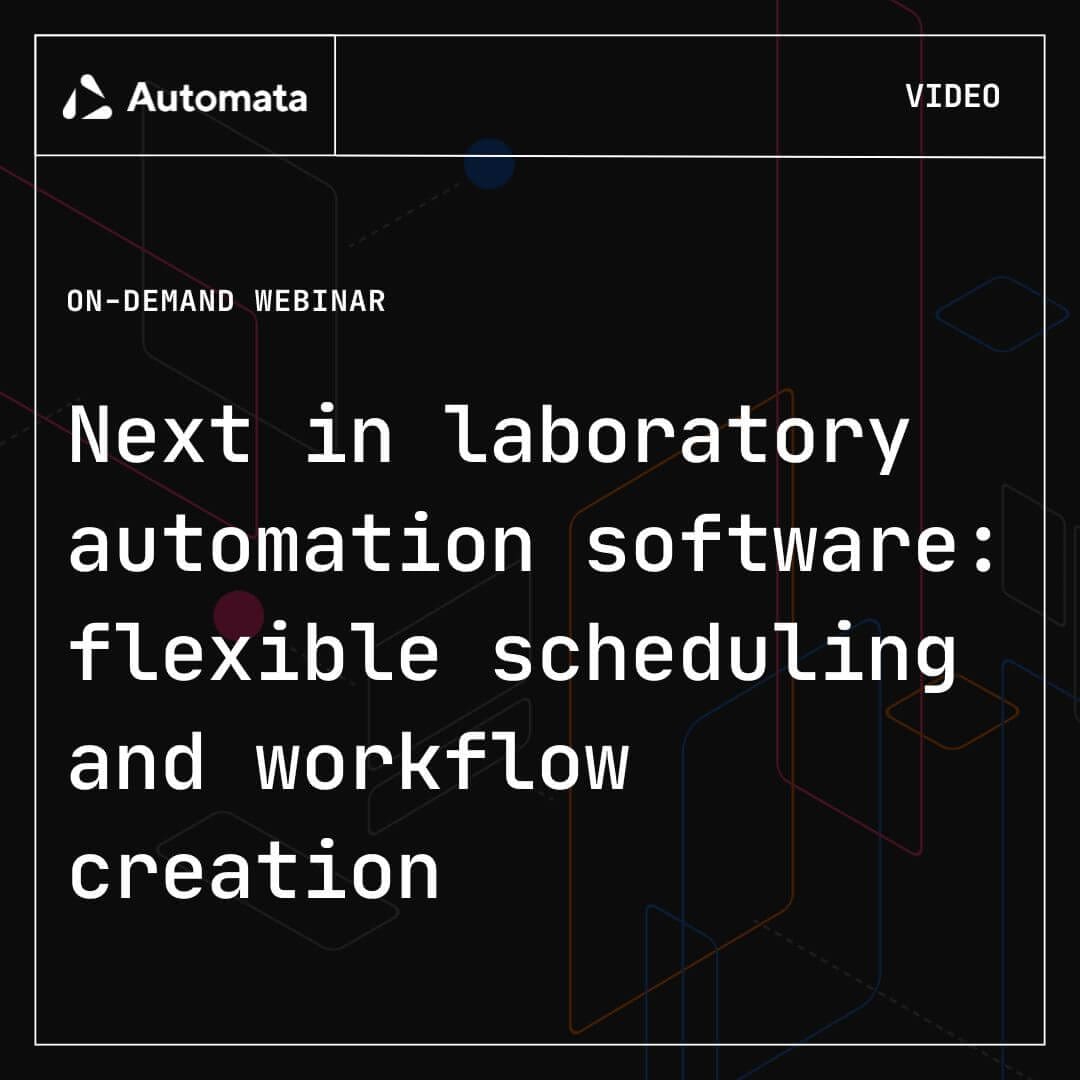The dawn of lab automation has brought with it many efficiencies. From increasing walkaway time for scientists to increasing throughput in response to demand, life in the lab has become easier to plan, predict and optimise.
The key to this lies in creating a platform that delivers both robotically and digitally, connects instruments, streamlines data flows, and supports dynamic lab scheduling at both a hardware and software level.
Efficient experiment scheduling software offers a multitude of benefits, from ensuring time, instruments and people are being used to their full potential, to improving reliability, consistency and experiment success rates.
However, finding a scheduling engine that can assign tasks to a set of heterogeneous resources with efficiency in mind, taking into account both the constraints of each resource and responding to these parameters if they change in order to deliver a complete workflow, is a whole new challenge.
Why are schedulers important?
Experiment scheduling software helps streamline processes and workflows in the lab.
They can:
- Support the creation of new and unique workflows and protocols
- Help analyse performance, optimising instruments and workflows
- Allow virtual workflow simulations for testing timing and experiment design
- Facilitate the execution and tracking of multiple workflows when instruments, robots and transport systems are fully integrated
Most labs have moved on from simply tracking experiments on paper or with spreadsheets, and we now see two popular types of schedulers in use: static, and dynamic. Their algorithms are typically either rule-based, considering specific scheduling problems or goals, or mathematical optimisation algorithms that seek to minimise end-to-end workflow execution time.
Static schedulers
Static schedulers make decisions based on known constraints. They typically allocate tasks before execution starts, and they do not have the functionality to change this during the run time in response to information from task-tracking events.
How a static scheduler may handle an instrument error during a run
Benefits and drawbacks of static schedulers
Because known parameters are used, static schedulers are good for simple predictable processes, are robust when the data in use is accurate, and don’t involve multiple threads being created, synchronised and working in parallel. While this may reduce risk, time efficiencies in generalised applications may be lost.
The predictability offered by static schedulers can help labs with resource allocation, dictating who needs to be available to monitor or support the workflow, what instruments will be available for other uses, and when results can be expected.
The main disadvantage, like with lots of lab automation solutions, is that experiments often don’t follow simple routes and rules, with each variable representing a potential issue that could cause the workflow to pause, delay or fail completely. Fault tolerance is low, load balancing is difficult, and adaptability is limited with static scheduling.
Dynamic schedulers
Dynamic schedulers adapt their decisions based on information provided during runtime. They take into account information from multiple real-time events and allocate resources based on real-time status and workload information.
How a dynamic scheduler may handle time constraints during a run
Benefits and drawbacks of dynamic schedulers
This built-in adaptability reduces the risk of workflow failure as the scheduler seeks to find an alternative route to successful execution.
Dynamic schedulers can reassign tasks that are failed or delayed without waiting for a master node or operator to intervene, improving reliability, removing the need for manual monitoring, and providing detailed data for use in experiment design and instrument optimisation.
Due to its complexity, dynamic scheduling requires sophisticated programming and can increase initial set-up times, with multiple threads needing to be created and synchronised. Moreover, losing the ability to pre-plan executions for optimality can limit experiment throughput or introduce variables that impact the consistency and quality of results.
Intelligent Scheduling Engine
Our LINQ Cloud Intelligent Scheduling Engine takes the benefits of static and dynamic schedulers and offers users the best of both worlds.
It has the ability to consider known constraints for effective workflow planning and resource allocation while using state-of-the-art solving algorithms to keep workflow delivery on track.
LINQ Cloud’s Intelligent Scheduling Engine considers:
- Time constraints
- Known conditionals
- Data transfer events
…allowing time to completion and expected results to be predicted while facilitating:
- Batch parallelisation
- Real-time error handling
- Dynamic rerouting
- Deadlock prevention
…enabling full confidence in successful workflow completion.
How LINQ Cloud’s intelligent scheduling engine handles run errors and constraints
Why LINQ Cloud and Intelligent Scheduling
Our scheduling engine concentrates on allowing labs to maximise their instrumentation while reducing reliance on scarce resources like people to benefit the workflow and, ultimately, its results.
By taking the best bits of static and dynamic schedulers, and combining that with our workflow builder software, we’ve been able to develop something that’s easy to use, makes an impact immediately, and supports labs on their journey to automation adoption.
Interested in learning more about the benefits that dynamic replanning scheduling can bring to your lab?
Speak with one of our automation experts today

Next in Lab Automation: Smarter Scheduling & Workflow Creation
Explore the latest in lab scheduling and workflow tools to streamline processes and enhance R&D efficiency.

